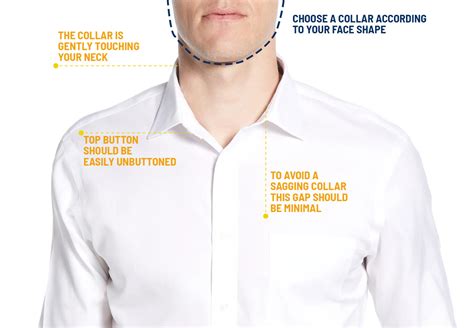Elevating Your Professional Image with Business Casual
In the dynamic world of finance, your appearance speaks volumes. While traditional suits remain a cornerstone, the rise of business casual demands an equally sharp approach. For the finance professional, this isn’t about dressing down; it’s about dressing smarter, leveraging fit to project authority, competence, and an unwavering attention to detail. A well-fitted business casual outfit ensures you look polished and prepared, whether in a client meeting or a team collaboration, solidifying your professional credibility.

The Foundation: Why Fit is Non-Negotiable
The single most crucial element in achieving a sharp, versatile business casual look is fit. An ill-fitting garment, no matter how expensive or well-designed, will undermine your entire aesthetic. Proper fit creates clean lines, enhances your physique, and conveys a sense of intentionality and professionalism. It’s the difference between looking like you just rolled out of bed and looking ready to close a multi-million-dollar deal. Ignoring fit is perhaps the greatest sartorial misstep for any professional.
Mastering the Blazer/Sport Coat Fit
A well-tailored blazer or sport coat is the cornerstone of many business casual ensembles, instantly elevating any outfit. Here’s what to look for:
- Shoulders: The seam should sit precisely at the edge of your natural shoulder. If it extends beyond, it’s too big; if it pulls inwards, it’s too small. This is the hardest part to alter, so get it right off the rack.
- Sleeves: When your arms are relaxed, the sleeve cuff should end just where your wrist meets your hand, allowing about half an inch of shirt cuff to show. Too long and you look swamped; too short looks juvenile.
- Length: The jacket should cover your rear and typically end around the mid-crotch area. It shouldn’t be so long that it looks like a suit jacket, nor so short that it resembles a cropped fashion jacket.
- Waist Suppression: A good blazer will have a slight taper at the waist, creating a subtle V-shape without feeling restrictive. You should be able to button it comfortably without excessive pulling or creasing.

Shirt Savvy: From Collars to Cuffs
Whether it’s a crisp button-down, a refined Oxford, or a premium polo, the shirt’s fit is paramount and dictates much of your overall neatness.
- Collar: You should be able to fit one finger comfortably between your neck and the buttoned collar. Anything tighter will choke you; looser looks sloppy and unprofessional.
- Shoulders: Similar to a blazer, the shoulder seam should align with your natural shoulder point.
- Chest and Torso: The shirt should skim your body without pulling across the chest or stomach. Excessive fabric will create a baggy, unkempt appearance, while too tight will restrict movement and look unprofessional.
- Sleeves (Cuffs): When unbuttoned, the cuff should comfortably fit around your wrist. When buttoned, it should be snug enough that it doesn’t slide past your hand, yet loose enough for comfort.
- Length: If wearing untucked (less common in finance but possible with certain styles), it should fall no lower than mid-fly and no higher than your belt line. For tucked shirts, ensure enough length to stay neatly in place throughout the day without coming undone.

Trousers and Chinos: The Right Foundations
Your lower half requires equal attention to detail, as poorly fitted trousers can ruin an otherwise perfect top.
- Waist: Trousers should sit comfortably at your natural waist without needing a belt to hold them up (though a belt is usually worn for style and completeness).
- Seat: No sagging or excessive fabric around the glutes. The fabric should drape smoothly over your rear without being stretched too tight.
- Thigh: A clean, straight line down the thigh is ideal. Avoid trousers that cling too tightly or billow excessively; there should be room for comfort without looking baggy.
- Break: For a modern business casual look, aim for a “no break” or “slight break.” This means the hem just grazes the top of your shoe, or creates a single, subtle crease. A full break can look dated, while too short can be overly casual.

Beyond the Basics: Knitwear and Accessories
Even knitwear benefits immensely from precise fit. Sweaters, cardigans, and quality polos should follow the same shoulder, chest, and sleeve principles as shirts. They should be tailored, not baggy, maintaining a clean silhouette that complements your frame. Finally, complementing your perfectly fitted attire with appropriate accessories – a quality leather belt that matches your shoes, a sophisticated watch, and subtle pocket square – completes the sharp, versatile image. These details reinforce the overall professionalism achieved through impeccable fit.
The Versatility of Proper Fit in Finance
A well-fitted business casual wardrobe offers unparalleled versatility, crucial for the varied demands of a finance career. A sharp blazer can be paired with tailored chinos for a client meeting, or with dark wash, well-fitted denim for an internal team lunch or more casual Friday. A perfectly fitting dress shirt transitions seamlessly from under a sport coat to being worn solo with tailored trousers. This adaptability, rooted in precise fit, allows finance professionals to navigate various professional settings with confidence and consistent style, always projecting an image of competence and trustworthiness. It’s about building a cohesive wardrobe that works as hard as you do.

Conclusion: Invest in Your Image
In the competitive landscape of finance, every detail counts. While market knowledge and strategic acumen are paramount, your personal presentation is a powerful, non-verbal communicator. Investing in business casual attire that fits impeccably is an investment in your professional brand. It ensures you not only look the part but embody the precision and professionalism your career demands, setting a high standard in every interaction and leaving a lasting positive impression.




